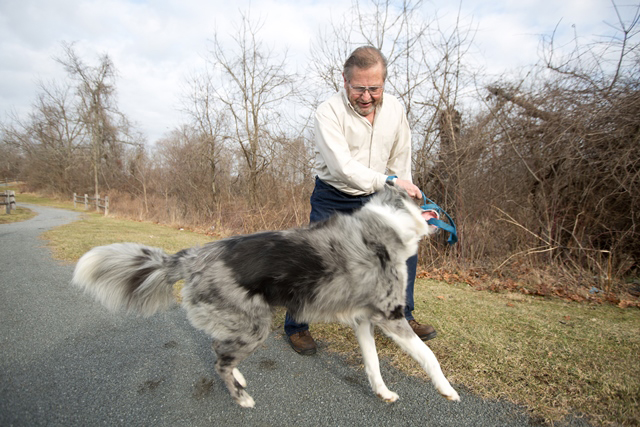It felt so good just to be able to walk and not get a cramp in my leg.

The frustration and the pain were becoming too much for John to handle. The 69-year-old Cream Ridge resident was hobbled by poor blood flow in his leg, which cramped anytime he tried to walk more than 500 feet.
“I was trying to walk to lower my cholesterol and I couldn’t do it,” he says. “It was frustrating.”
After a stent attempt failed to address the issue, John thought the pain was something he had to live with. But RWJ University Hospital Hamilton vascular surgeon Honesto Poblete had other ideas.
“He had blood flow to his leg,” Poblete says, “but the blood was traveling through small blood vessels that pick up the slack as best as they can. They’re never as good as the original blood vessel.”
Poblete thought bypass surgery was a viable option, however, it’s up to the patient to select the treatment, he says.
“We don’t treat patients like X-rays and test studies,” Poblete says.
With all of the options on the table, including another stent attempt, John selected the bypass.
“Everything is explained to you,” says John. “The treatment is your choice.”
The bypass surgery, Poblete explains, creates a more efficient route for blood flow. The surgeon makes two incisions: one in the groin and one in the knee to expose the necessary arteries. Next, the surgeon connects the arteries with a conduit. This is done with a vein harvested from the patient’s body or with synthetic material. Then, the surgeon determines the new route for the blood. They can tunnel the conduit under the area where the original artery ran, or, if using a vein near the skin’s surface, leave it in place. After the surgeon identifies the bypass route, he then connects the conduit to the artery in the knee and the artery in the groin.
“You’re creating a new route,” Poblete says. “You’re basically creating a new artery and you’re bypassing the area that’s blocked, just like a bypass on any road.”
The results, John says, were immediate.
“When I went in for the surgery, everything went wonderfully. I was walking around the hospital the night of the surgery. They had to tell me to go back to my room. It felt so good just to be able to walk and not get a cramp in my leg.”
Poblete says that John’s prognosis looks good, especially since his activity levels have increased after the surgery. For patients dealing with similar issues, Poblete says it’s best to take a conservative approach first. Often, he’ll recommend more walking to try to address the blood flow problem. If walking and medications fail, then he recommends surgery.
And if it comes to surgery at RWJUH Hamilton, John says you’re in good hands. The surgery, he adds, is bringing him closer to a major milestone:
“I want to keep going until I’m 110. That’s the goal.”